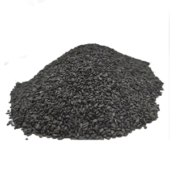
Edible Oil Industry Of India
Indian agriculture is substantially dominated by edible oils. In fact, edible oil seed production makes for the second most widely grown crop after cereals. Today, we will share with you a few glimpses of the edible oil industry in the country – its present production capacity, import, export, constraints etc.
Exports
Thanks to our “Yellow Revolution” in the nineties— India ended up attaining substantial autonomy in oil-seed production by then. However, the autonomy couldn’t be sustained for a long period of time. Oilseed meal exports make for a minuscule part of our economy. There was time when India exported oil-seed meals to Thailand, Vietnam and Indonesia on a regular basis. However, today, they’ve shifted to lower priced origins because of India’s noncompetitive export prices.
Production and Imports
Oil-seed production in India remains concentrated in a few areas. Here is a glimpse of those areas:
• Madhya Pradesh
• Rajasthan
• Maharashtra
• Gujarat
While these are the major producers of oil-seeds in India, there are other states that account for paltry output. These states are:
• Uttar Pradesh
• Haryana
• West Bengal
• Karnataka
Edible oil is consumed widely in Western India, Southern India consumes less in comparison. However, the southern part of the country is largely known for its affinity towards sunflower oil and general avoidance of mustard and soybean oil. Again, palm oil is something which is hardly endorsed in North India.
Constraints
India remains the 5th largest vegetable oils producers in India. Despite its prominence, the country continues to pay heavy import duties on vegetable oils. It does make for one of the largest importers of the same. However, the country can aim for a mammoth 67% percent growth in edible oil production by increase in average yield. However, factors like external price shock, biotic stress, cultivation impediments and high seed rate have ended up acting as major constraints in this regard.






